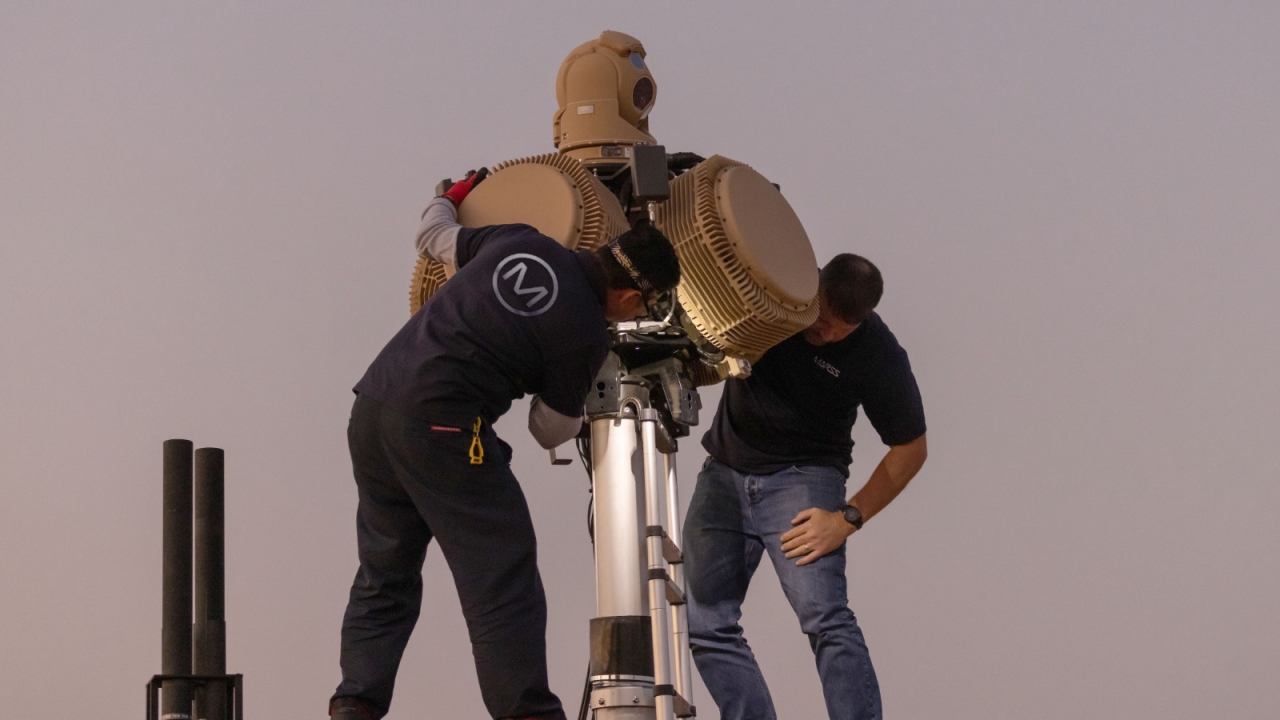Jordan's KADDB confirms gunship conversion programme with ATK

US company Alliant Techsystems (ATK) has formally announced that it had been contracted by Jordan’s King Abdullah II Design and Development Bureau (KADDB) to convert two CASA/Airbus Military CN-235 twin-engine transport aircraft into light gunships for the Royal Jordanian Air Force.
The programme, revealed at the International Defence Exhibition and Conference (IDEX) in Abu Dhabi on February 20, will see ATK converting a pair of ex-Spanish Air Force CN-235s to an armed configuration.
The two aircraft will be fitted with ATK’s new light gunship special mission aircraft capabilities package. This has been developed from the company’s existing special mission aircraft modification programmes, which have seen ATK incrementally integrating a range of sophisticated intelligence, surveillance and reconnaissance (ISR) capabilities – and later sometimes armament – on to some 60 aircraft, including a wide range of platforms.
These platforms have included Iraqi and Afghan Cessna Combat Caravans (which have ISR capabilities and Hellfire missiles), the US Department of Homeland Security’s Bombardier Dash-8s, and a number of Hawker Beechcraft King Airs and Lockheed Martin C-130s.
The company’s ‘building block’ approach ensures low technical and programme risk.
ATK will install and integrate its M230LF link-fed 30mm chain gun (used on the Apache attack helicopter) on to the CN-235s, and will also fit new weapons hardpoints on stub wings mounted adjacent to the main landing gear sponsons. These pylons will allow the aircraft to carry a range of armament, including AGM-114 Hellfire laser-guided missiles, and guided or unguided 2.75-inch rockets.
The M230LF cannon will be fitted in the rear fuselage, firing out through an aperture just in front of the port para-door, aping the broad configuration of the USAF’s AC-130 Hercules gunships.
The M230 is a tried and tested weapon and offers extremely low recoil. “This is not like installing a Bushmaster,” ATK said at IDEX. It also offers a high degree of combat and cost-effectiveness. “Ten rounds from the cannon can be as effective as a Hellfire missile – and very much cheaper,” Jed Holzapfel, ATK’s group vice president for International Business told Arabian Aerospace.
The aircraft will also be fitted with ATK’s STAR mission system, which consists of a package of electro-optical ISR and targeting sensors, including a chin-mounted Wescam/L-3 MX-15D imaging turret.
The MX-15 incorporates a colour daylight video camera with zoom lens, a mono daylight camera with ‘spotter’ lens, a high-magnification IR sensor with a four-step zoom, an eye-safe laser rangefinder, a laser illuminator and a laser designator with LRF. The aircraft will also be fitted with comprehensive self-protection equipment.
The two CN-235s being converted to light gunship special mission aircraft configuration have been refurbished and ‘zero-timed’ by EADS-CASA, before being flown to ATK’s Fort Worth facility for conversion and ‘missionisation’.
They are expected to be modified, delivered and tested by spring 2013, subject to US government export licensing approval.
The aircraft will become dedicated gunships, since the armament and sensor package is permanently installed and is not ‘roll-on/roll-off’, though there is some cabin space to allow them to undertake limited transport tasks, or to carry personnel and equipment for self-deployment.
ATK sees some potential for converting further aircraft for Jordan, in which case the KADDB would play an enhanced role.
The new armed CN-235 is not aimed at the US forces though, if the requirement that resulted in the AC-27 light gunship comes back, the company would probably offer the type (or a similar modification on a different aircraft platform) to the US Air Force.
The type is also attracting great interest in the Middle Eastern region and ATK acknowledged that it was having top-level discussions with a number of potential customer nations during the IDEX show.
The company sees market opportunities in the Middle and Far East and in Africa, where this class of aircraft’s efficiency, small airfield operating capabilities and low cost give it a powerful edge.
This class of aircraft offers a compelling alternative to armed UAVs, providing a similar blend of offensive and ISR capabilities and high endurance, but with the advantage of putting the human into the platform, thereby providing greatly enhanced situational awareness and flexibility.
Stay up to date
Subscribe to the free Times Aerospace newsletter and receive the latest content every week. We'll never share your email address.

